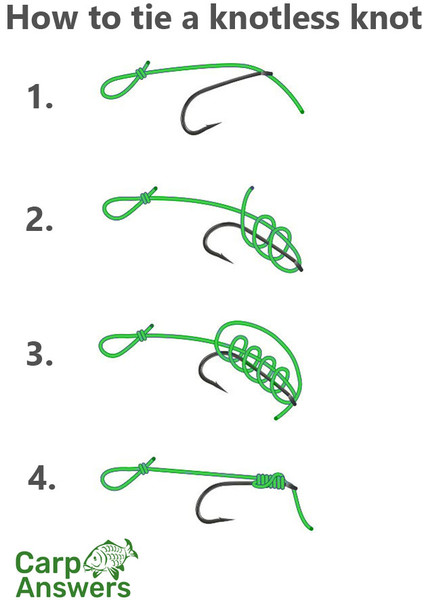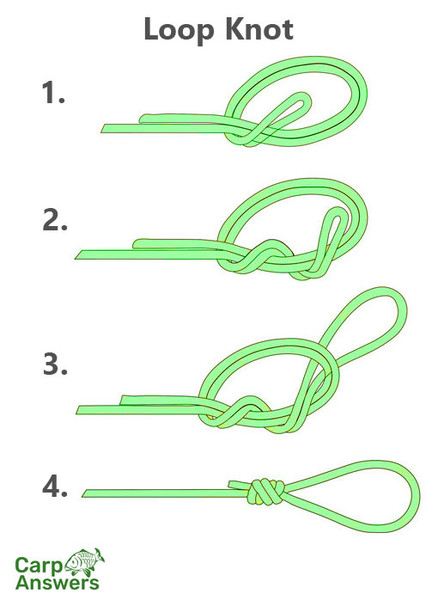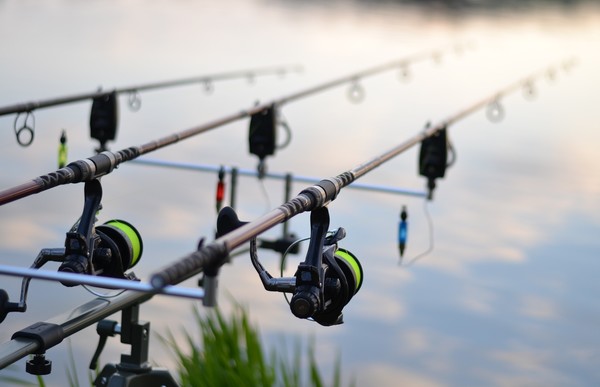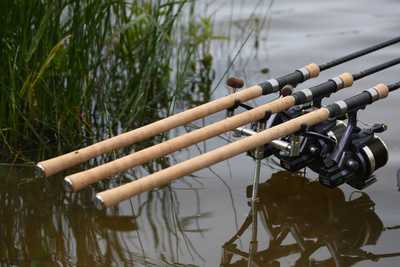Complete Guide to Carp Rigs for Beginners
There is a plethora of beginner carp rig information available online and, to be honest, this can all become very overwhelming for a beginner carp angler.
In this carp rigs for beginners article, we are going to explain the need to know information and the carp fishing setup for beginners so you can start fishing sooner. Trust me when I say this, you do not need to know any advanced carp rigs in order to catch carp.
We are going to provide you with all of the information you need to tie a simple beginner carp rig that will catch you carp and explain all of the carp fishing tackle that makes up a beginner carp rig along with some excellent tips and tricks.
Does that sound good? Let's get started.
Carp Fishing Setup for Beginners
We will start with some context around what exactly is a carp rig? In essence, a carp rig is a series of carp fishing tackle that is attached to the end of your carp fishing line that will allow you to hook and catch carp. These carp fishing tackle components usually comprise of the, but not limited to, the following:
- hook
- bait, usually a boilie but there a many alternatives
- hook length, such as coated braid or monofilament
- swivel or quick change clip
- lead system for fish safety
- lead
- leader
The above list of carp fishing tackle components is all you require to create a beginner carp rig to catch fish. There are, of course, many additional carp fishing tackle components that can also be used, which we will discuss later in the article, but I want to reiterate this, you will catch carp using a carp rig made of these basic carp fishing tackle components.
For any carp rigs for beginners, you should keep things as simple as possible.
In fact, a friend of mine recently landed a 40lb plus mirror carp using this exact carp rig we are going to discuss in this carp rigs for beginners article. He kept things simple and did the basics very well and was rewarded with an absolute beast of a fish. Check out the carp here.
There is nothing wrong with using complex and advanced carp rigs that have been created by professional and amateur anglers alike, and in some situations, these can work well. But as for carp rigs for beginners, you should keep things simple. Once you have used and mastered tying the beginner carp rig in this article, I encourage you to learn more rigs to add to your armoury.
The Beginner Carp Rig Diagram
We are now going to explain the carp rig for beginners at a high level and then break everything down to individual carp fishing tackle components, their uses and options for each. Before we do, let's have a look at the complete carp rig diagram for beginners in all of its glory!
The simple carp rig for beginners in question is known as the 'knotless knot rig' or 'hair rig', which is very confusing based solely on these names. For this article, we are going to refer to this as the 'knotless knot rig'.
The beginner carp rig consists of a hook complete with a boilie, which in this case, is attached using the knotless knot. This, as the name suggests does not actually require a knot to tie. Have a look at the following diagram which will make things much clearer and show how simple this is to tie.
- Lay the hook length (line) along the shank of the hook and feed through the eye
- Wrap the hook length 6 - 8 times around the shank of the hook leaving a hair length for the boilie. We will discuss this shortly
- Feed the hook length back through the eye of the hook
- Tighten down to complete the knotless knot. Tip, add some saliva to help the hook length tighten down more.
So as you can see, the hook length is held in place by itself when wrapped around the shank of the hook. The boilie is attached to the end of the hook length and not the hook itself. This leaves the hook free to prick the carps mouth. This type of approach has been used for many years going as far back as the 1970s and is still hugely popular today.
This is a very simple 'knot' to tie and I recommend you practice this until you are happy with the results. This will give you a great foundation to build upon and help you tie other advanced carp rigs later on.
So how is the bait and in this case, the boilie attached to the hook length?
The Hair
The hook length that is left sticking out from the shank of the hook is known as the hair. This can vary in length but as a beginner, I would suggest you follow the length in the diagram and have the boilie sitting just after the hook, this will be in an excellent position to stick into the fishes mouth when it takes your bait.
You will need to tie an overhand loop knot which will be used to hold the boilie in place. See the following diagram for instructions to tie this must know knot, which is used often in carp fishing rigs.
When this loop is tied, use a baiting needle to attach the boilie which is held in place using a boilie stop. A baiting needle will assist in passing the hair through the boilie with ease ready to be fixed in place with a boilie stop, a must-have in your tackle bag.
Hook length
We have been referring to this component as the hook length, which in actual fact, can be a number of different materials including braid (coated/standard) or fluorocarbon. Each of these materials has positives and negatives.
Braid is a very strong material that can be coated to make the hook length stiffer and abrasion-resistant. Available in multiple colours to match the lake bed you are fishing over.
Perfect for the knotless knot rig in this article and is something I use on a regular basis. I recommend the Korda Coated Braid, you cannot go wrong with this product
Braid has no stretch to the material which is perfect for detecting carp eating your bait. It is a very supple material and highly versatile. The coated version can be stripped back, using a stripper tool, to allow for the knot to be tied but keeping the stiffness and abrasion resistance that it offers.
It also allows for the hook to manoeuvre more easily and hopefully catch the carps mouth meaning your catch rate improves. Braid is more visible than fluorocarbon and so you must choose the colour that matches the lake bed you are fishing over.
Fluorocarbon is denser than braid and will sink like a brick which makes it very popular as a leader (the section between your carp fishing line and carp rig). Used mainly in clear water as it is virtually invisible and is a must use in this type of lake.
Available in a variety of thicknesses and lengths but it can be more expensive than other types of material. I find fluorocarbon slightly harder to work with when tying carp rigs and for a carp rig for beginners, you may experience the same result.
Carp Lead Clip System
A very important piece of the beginner carp rig that is paramount for carp safety is the lead clip system. This is used to attach a lead to the carp rig but also allows for this lead to be dropped should the carp become tangled in the weed or even if the carp fishing line were to break off.
These scenarios are not uncommon and so you must ensure your carp rig is as safe as possible to ensure the fishes welfare, we want to make sure all carp will fight another day after we catch them.
There are two main types of lead system, fixed or running. There is also a semi-fixed but for the purpose of this carp rigs for beginners article, let's keep things simple for now.
Fixed allows for a lead to be attached and held in place using a tail rubber stop, this stop can be easily pulled off allowing for the lead to be dropped.
The running lead is as the name suggests, where the lead is free to run up and down the carp fishing line and again can easily be dropped by the fish should the carp fishing line break on sharp rocks etc.
The fixed lead system is best used on hard lake bottoms and is my choice for the majority of my fishing. The lead offers resistance when the carp picks up the bait and usually provides a good hook hold (where the hook pierces the carps mouth) and I highly recommend the Korda Lead Clip System which is available in a variety of colours and provides everything you need to get started, which is perfect for any carp rig for beginners.
The running lead is best used on softer lake bottoms as the lead can become buried. If you use a fixed lead and this became buried it would stick out like a sore thumb and spook any carp. The running lead can give a better bite indication and so is used in scenarios where fish are harder to catch or during the winter where bites are harder to come by.
Carp Leads
There are more to fishing leads than you may initially think. They have a number of different purposes including providing resistance when a carp takes your bait which should provide a good hook hold, giving you the weight to cast the rig out to the desired distance and to ensure the rig sits correctly on the lake bed.
For example, let's say you had a ball-shaped lead on a sloped lake bed, what happens to your beginner carp rig? Well, it will roll down the slope with the lead and sit horribly in the water guaranteeing you never catch any carp. So choosing the right lead is very important. Here is a summary of some of the leads available and their uses:
- A pear lead which has a flat edge to ensure it stays in place and is nice and compact which is perfect when fishing with PVA bags.
- A distance lead, which as the name suggests, is designed to fly through the air with its torpedo-like shape. Often much heavier than a pear and used for fishing large lakes.
- A gripper lead, which again as the name suggests, will grab hold of the lake bed and stay in place for those extra tricky spots.
Leads are very inexpensive and so I would suggest you purchase a selection in different shapes, sizes and weights.
How to tie a carp rig to mainline
The last knot you require for this carp rig for beginners and in fact, one you will use over and over again. This is used to attach the hook length to a swivel, tie a carp rig to mainline or in this case the lead clip system swivel. Check out the following diagram showing how it is tired.
Swivels
Swivels come in a variety of types and put simply, attach your rig to your main fishing line. I like the quick change versions which allow the carp rig to be swapped over easily without having to cut or re-tie any hook length. Some types of swivel are micro, quick link, flexi, ring and big eye. Check out this 150pc Carp Swivel set, inexpensive and offers a range of swivels perfect for a beginner.
Hook types, sizes and uses
Another important part of the beginner carp rig is which hook type and size to choose. Carp hooks are incredibly sharp and strong to ensure you give yourself the best possible chance of landing the carp should you hook into one. They tend to vary in size from 2 - 12 where the larger the number the smaller the hook. The most common use would be 6 - 8 for fishing on the bottom with say the knotless knot rig. I tend to try and match my hook bait, in this case, a boilie, to the size of the hook. I simply compare the two and see if they match up, you can use common sense in this scenario.
Before using any hook, run the point over your fingernail and ensures it catches. This will prove it is razor-sharp and ready to catch you a carp or two. If it scratches, I would use another hook as it is not sharp enough. Small tricks like this could result in success or failure so always check.
If you were fishing with zig rigs, which we will talk about shortly, you would use a size 12 hook. The following hook types are available and have different uses.
- The curve shank hook provides an excellent hook hold and is perfect for wary carp. The hooks curve into the carps mouth and so has to curve out which is very unlikely once the pressure is applied. These are one of my favourite types of hook. Korda offers the Kurve which are superb and always very sharp.
- A straight hook which is used when surface fishing as it sits perfectly ready to hook a carp.
- An inward facing hook which is the choice when using the knotless knot rig we are talking about in this article. It turns aggressively into the carps mouth due to the shape.
- Chod hooks which have an outward-facing eye, perfect for the chod rig which is often called the big carp rig as it lands so many monsters. This is a more advanced rig that you can look into after.
Putty
Putty is an optional component but something that is worth mentioning. It is a very dense material that is wrapped around your hook length to ensure everything is pinned down in an attempt to conceal the beginner carp rig from the fish. A very inexpensive purchase and well worth considering.
Zig rig fishing
Zig rig fishing is where you actually fish on the surface or at varying depths of water as opposed to fishing on the bottom. This type of fishing is devasting during the summer where carp tend to be in the upper layers or patrolling on the surface of the lake. The warm temperatures cause this behaviour. A smaller hook is a must to ensure the carp cannot see your rig. I like to use a knotless knot with some clear fluorocarbon and a piece of floating foam. This is out of the scope of this article but we do cover more details in top tips for catching carp in summer
Adjusting your beginner carp rig
This is a massive part of being successful as a carp angler and is something you will get better at the more experience you gain.
If you start with a carp rig and find you are not getting bites, starting making small changes. Some of the following ideas would be where I like to start:
- size of the hook
- colour of the boilie
- shape and size of boilie
- length of hook length
- length of hair
Keep making small adjustments until you find something that works and you start getting bites. This is a very exciting part of carp fishing and is very satisfying when you make a change that works.
Venue Rules
Another point in fish safety and welfare. Many fisheries will have a series of rules that are designed to keep the fish safe. Make sure you check these out and follow the rules. For example, many venues ban leadcore leader as they have had fished killed by anglers using un-safe rigs made from these materials.
This is really about common sense and ensuring you use a safe carp rig that follows the rules of the fishery. By doing so you are ensuring the carp can fight another day and be caught by other anglers.
Summary
This concludes our carp rigs for beginners article and should provide you with just enough detail to get started without overloading you with too much information. Remember to keep things simple and gradually, as you gain experience, look at more advanced carp rigs. Something like the chod rigs would be an excellent candidate.
We truly hope you take away some valuable information and use it to catch carp.
Images Accessed From
https://fishingadventureswales.weebly.com/on-the-bank---setting-up-your-rods.html
http://www.atomictackle.co.uk/tutorials/view/80
https://www.mossyoak.com/our-obsession/blogs/fishing/five-knots-every-fisherman-should-know
https://www.anglingtimes.co.uk/advice/rigs/articles/how-to-tie-the-grinner-knot
Other Articles We Think You'll Like
Join the group?
Our one-click login makes it easy to join our carp community. You can leave your thoughts, ask questions and be part of the ever growing group. Just use the buttons below to login now!
What do you think? Let us know what you think about the article by leaving a comment
We´d really appreciate it!




















51